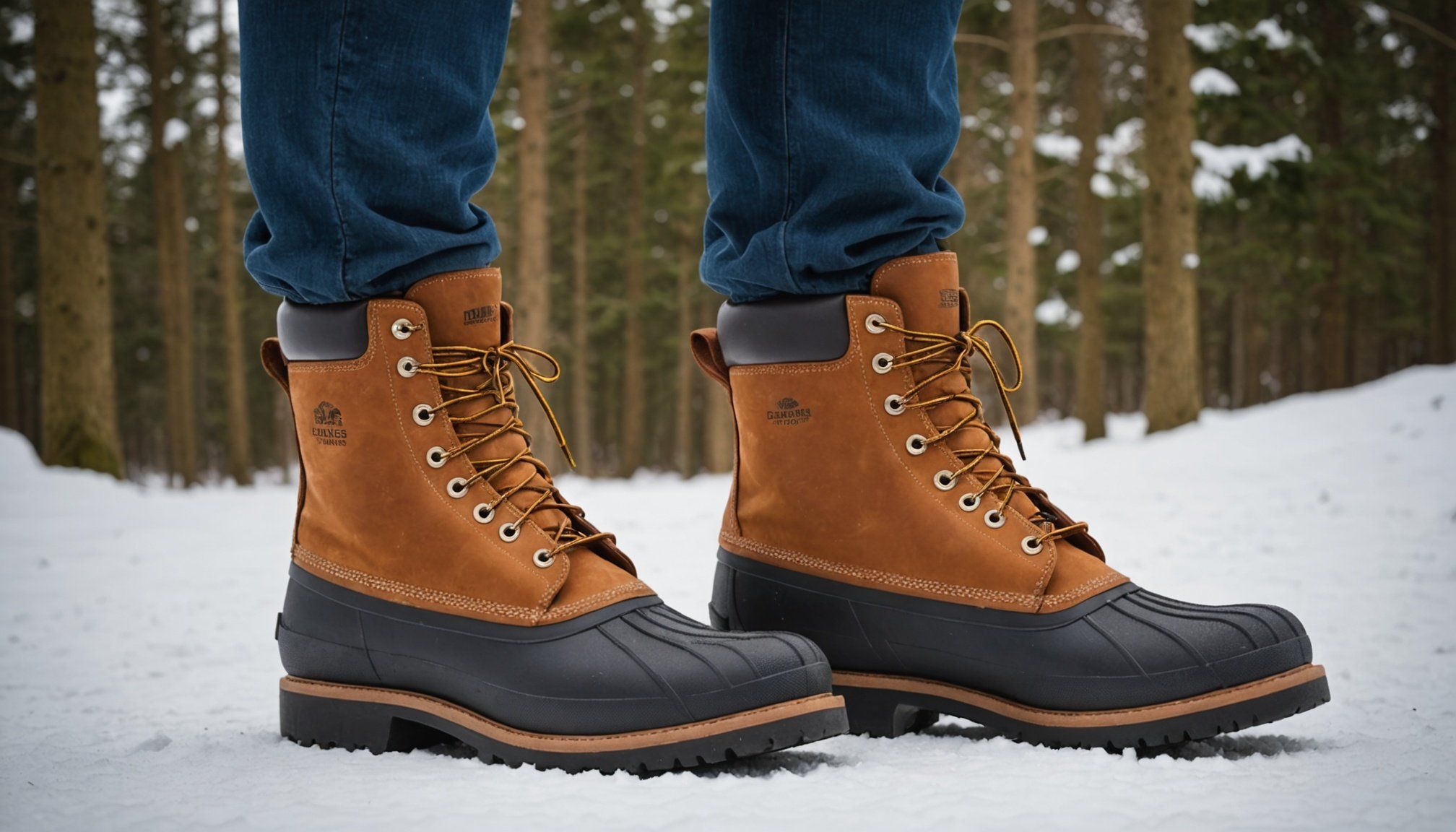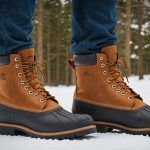Must-Have Features for Selecting High-Quality Winter Boots Made in the UK
As the winter season approaches, finding the right pair of winter boots can be a daunting task, especially when you’re looking for high-quality options made in the UK. Here’s a comprehensive guide to help you make the best choice for your winter footwear needs.
Understanding Your Needs
Before diving into the features, it’s crucial to understand what you’ll be using your winter boots for. Are you an avid hiker, a city dweller, or someone who spends a lot of time outdoors in harsh winter conditions? Your activities and preferences will significantly influence the type of boots you should choose.
Also to see : Crafting the Perfect Eco-Friendly Capsule Wardrobe for UK Women: Your Ultimate Guide
Waterproofing and Insulation
Why Waterproofing is Essential
Waterproofing is one of the most critical features for winter boots. You don’t want your feet to get wet and cold, which can quickly ruin your day. Look for boots with a reliable waterproof membrane like Gore-Tex or similar technology.
| Boot Model | Waterproofing | Insulation |
|
|---------------------|
|
| Baffin Impact | Yes, up to outsole | 1600g Thinsulate Ultra|
| Meindl Air Revolution Alpine Pro | Yes, Gore-Tex | 200g Gore Duratherm |
| Icebug Stavre BUGrip GTX | Yes, Gore-Tex | Primaloft Bio |
Insulation for Warmth
Insulation is another key factor to keep your feet warm. Different types of insulation, such as Thinsulate, Primaloft, or even natural materials like wool, can provide varying levels of warmth.
Also read : Eco-Friendly Laundry Hacks: Preserve Your Delicate UK-Made Fabrics with These Expert Tips
“For winter hiking, your boot should have a waterproof membrane. We’re sticklers about moisture, because wet, cold feet can mean the end of your hike—or worse,” notes a tester from Backpacker[3].
Traction and Sole Quality
The Importance of Traction
Traction is vital for walking on icy and snowy surfaces. Boots with specialized outsoles, such as those with carbide-tipped steel spikes or soft rubber compounds, can make a significant difference.
“Fully cleated shoes are the safest for walking on ice, and generally deliver decent levels of versatile traction on softer surfaces like slush and snow,” explains Solereview[2].
Sole Materials and Design
The sole material and design should be durable and flexible enough to handle various winter conditions. Vibram’s Arctic Grip outsole, for example, is known for its excellent traction on wet ice.
- Vibram Arctic Grip: Known for its proprietary compound that remains flexible in cold temperatures.
- Carbide-tipped Steel Spikes: Embedded in the rubber outsole for enhanced traction on ice.
- Soft Rubber Compounds: Remain flexible in cold temperatures and provide good grip on snow and slush.
Comfort and Fit
Importance of Comfort
Comfort is paramount, especially if you plan to wear your boots for extended periods. Look for boots with cushioned insoles, breathable linings, and a comfortable fit.
“The Softstar Shoes Phoenix are exceptional sheepskin boots known for their high-quality craftsmanship. They feature thick, warm fur, providing a cozy and comfortable experience,” highlights Barefoot Universe[1].
Fit Considerations
Ensure the boots fit well without being too tight or too loose. Adjustable lacing systems and various width options can help achieve the perfect fit.
- Adjustable Lacing: Allows for a customizable fit.
- Multiple Widths: Ensures the boots fit comfortably for different foot shapes.
- Breathable Linings: Helps in maintaining foot health by preventing moisture buildup.
Style and Versatility
Balancing Style and Functionality
While functionality is crucial, style shouldn’t be overlooked. Many winter boots now come in stylish designs that can easily transition from outdoor activities to everyday wear.
“The VIVOBAREFOOT Tracker Winter is the winterized version of their popular Tracker models, crafted from high-quality materials and featuring a stylish and versatile design,” notes Barefoot Universe[1].
Collection and Variety
Look for brands that offer a variety of styles to suit different preferences. From knee-high boots to Chelsea boots, there’s something for everyone.
- Knee-High Boots: Ideal for deep snow and added protection.
- Chelsea Boots: Sleek and versatile, suitable for both outdoor and urban settings.
- Muck Boot Styles: Practical and durable, often used for work or heavy-duty outdoor activities.
High-Quality Materials
Leather and Synthetic Materials
High-quality materials such as leather, vegan leather, and synthetic materials can ensure durability and performance.
“The Bär Shoes Grace emerges as our top pick, crafted from high-quality materials, including a buckskin leather upper and woven lambskin lining,” explains Barefoot Universe[1].
Eco-Friendly Options
For those who prefer eco-friendly options, look for boots made from recycled materials or sustainable practices.
“The Feelgrounds offer unisex vegan winter boots, surprising us with outstanding traction, ranking among the best on this list,” notes Barefoot Universe[1].
Practical Insights and Actionable Advice
Choosing the Right Boot for Your Activity
- Hiking Boots: Look for boots with aggressive lugs, waterproof membranes, and good insulation. The Meindl Air Revolution Alpine Pro is a great example[3].
- Snow Boots: For casual snow activities, boots like the Baffin Impact with its impressive warmth and waterproofing are ideal[4].
- Winter Work Boots: For work in harsh conditions, boots like the Bogs Bozeman Tall Boots with their high-cut design and waterproof construction are perfect[4].
Maintenance Tips
- Waterproofing Treatment: Apply a waterproofing treatment to non-waterproof boots to enhance their durability in wet conditions.
- Cleaning and Drying: Regularly clean and dry your boots to maintain their quality and extend their lifespan.
Selecting the right winter boots involves considering several key features: waterproofing, insulation, traction, comfort, style, and the quality of materials. By understanding your needs and prioritizing these factors, you can find a pair of high-quality winter boots that will keep your feet warm, dry, and comfortable throughout the winter season.
As a final note, remember that the best winter boots are those that balance functionality with style and comfort. Whether you’re hiking through snowy trails or walking through icy city streets, the right pair of boots can make all the difference.
Table: Comparison of Top Winter Boot Models
| Boot Model | Waterproofing | Insulation | Traction | Comfort | Style |
|---|---|---|---|---|---|
| Baffin Impact | Yes, up to outsole | 1600g Thinsulate Ultra | Good on compact snow | Warm, but heavy | Practical |
| Meindl Air Revolution Alpine Pro | Yes, Gore-Tex | 200g Gore Duratherm | Aggressive lugs | Comfortable, supportive | Technical |
| Icebug Stavre BUGrip GTX | Yes, Gore-Tex | Primaloft Bio | Carbide-tipped spikes | Comfortable, breathable | Versatile |
| VIVOBAREFOOT Tracker Winter | Yes, sealed seams | Felt around ankles | Decent flexibility | Comfortable, stylish | Versatile |
| Bär Shoes Grace | Yes, robust Vibram® | Buckskin leather upper | Good traction | Warm, comfortable | Stylish |
Detailed Bullet Point List: Key Features to Look For
-
Waterproofing:
-
Gore-Tex or similar waterproof membrane
-
Sealed seams
-
Water-resistant materials
-
Insulation:
-
Thinsulate Ultra
-
Primaloft Gold
-
Natural materials like wool or sheepskin
-
Traction:
-
Carbide-tipped steel spikes
-
Soft rubber compounds
-
Aggressive lugs for gripping snow and ice
-
Comfort:
-
Cushioned insoles
-
Breathable linings
-
Adjustable lacing systems
-
Multiple width options
-
Style and Versatility:
-
Knee-high boots for deep snow
-
Chelsea boots for urban settings
-
Muck boot styles for heavy-duty activities
-
Stylish and versatile designs
-
High-Quality Materials:
-
Leather (buckskin, suede)
-
Synthetic materials (vegan leather)
-
Eco-friendly options (recycled materials)
-
Practical Insights:
-
Choose boots based on your specific activities
-
Apply waterproofing treatments to non-waterproof boots
-
Regularly clean and dry your boots to maintain quality and extend lifespan.











